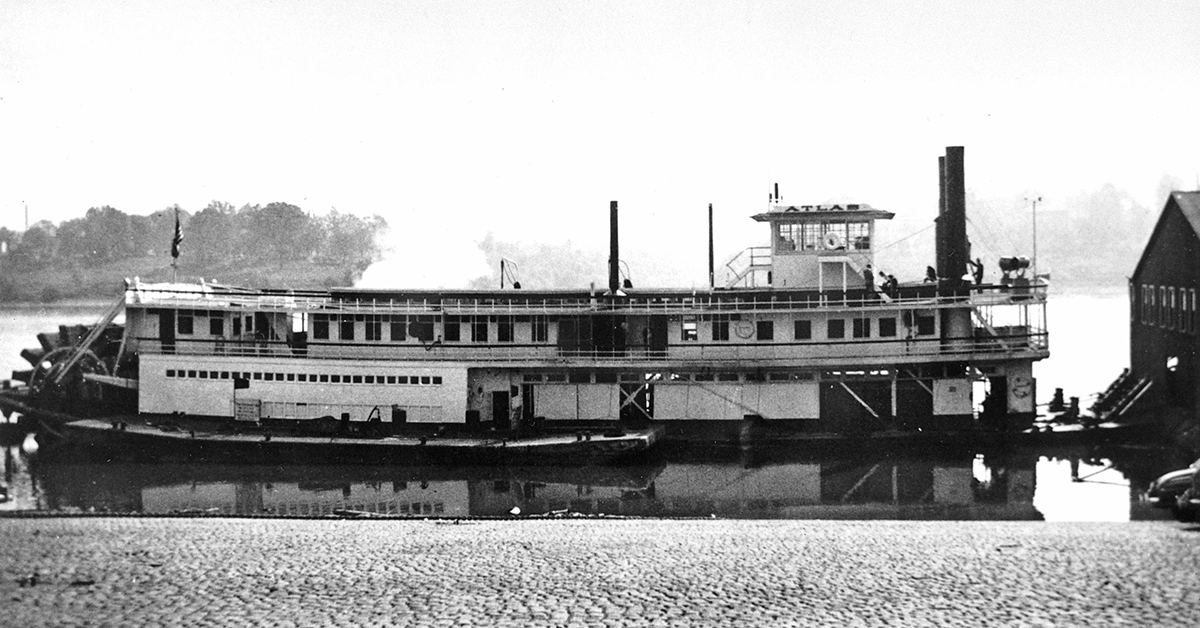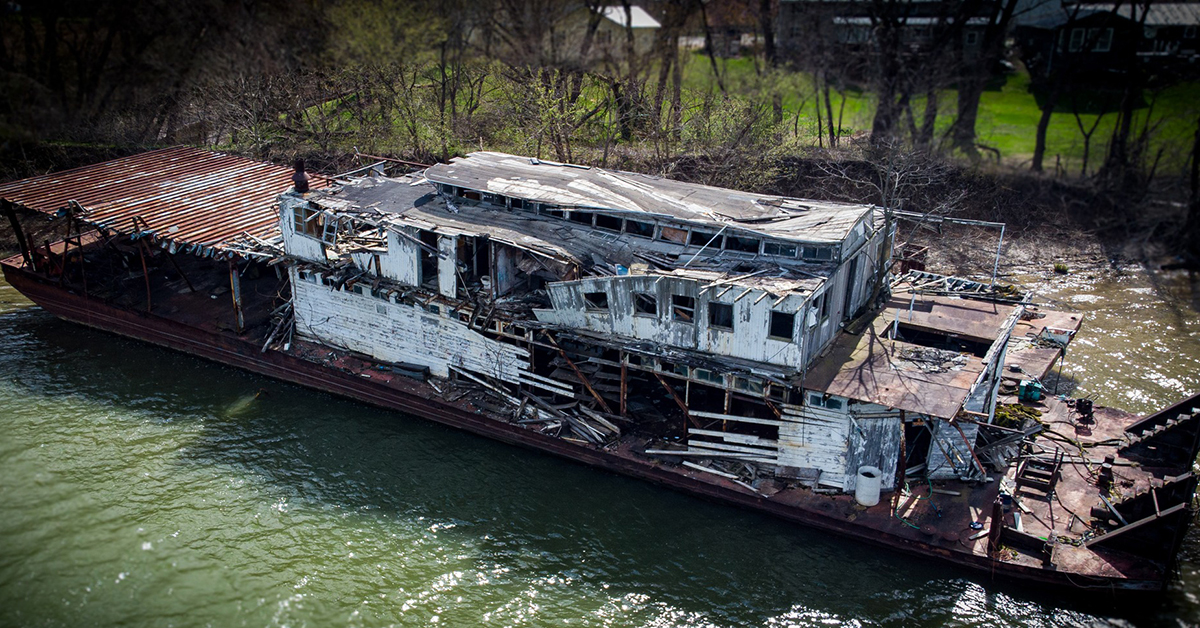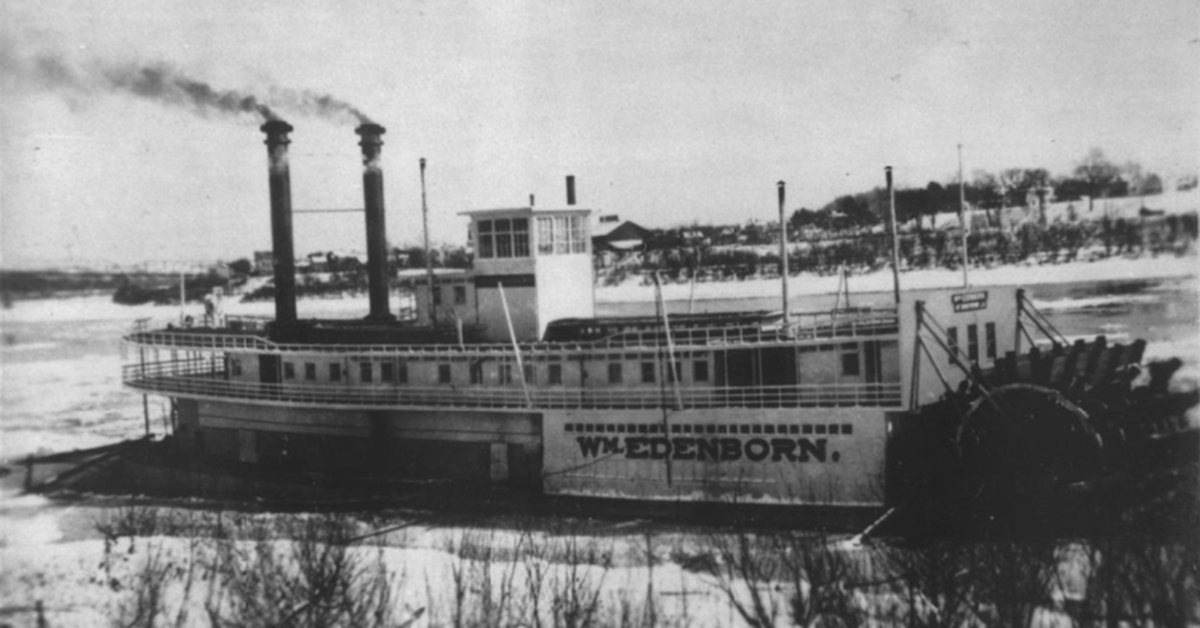There are times when a single photo can cause a flood of memories to wash through the mind. This happened recently with a photo depicting a partially beached hull with a wooden cabin in an advanced stage of decay. Someone described it as an “old wreck,” but as it is with most “old wrecks,” this one has a rich history.
A man named William C. Edenborn was born in Prussia in 1848. Both of his parents died by the time he was 12 years old, and he obtained an apprenticeship with a steel-wire manufacturing firm in Plettenberg, Germany. In 1867, Edenborn immigrated to the United States and found work in a wire mill in Frankstown, Pa. Two years later, he moved to St. Louis, where he worked with a local businessman named F.M. Ludlow in the design and construction of a wire mill. Edenborn became involved with several businesses involving the production of steel wire and invented some new concepts in the manufacture of barbed wire, ultimately controlling some 75 percent of that market. In 1876, he married Sarah Drain of St. Louis, and over the years, she became a business confidant and counselor to her husband. In 1898, he merged several wire companies into American Steel and Wire Company.
In 1901, Edenborn sold his wire interests to J.P. Morgan, who then made them a part of United States Steel. The sale made Edenborn one of the wealthiest men in America at the time, and he and his wife relocated to Louisiana, where he became interested in railroads. In 1903, he formed the Louisiana Railway and Navigation Company (LRNC) and had a network of railroads throughout the state all the way into New Orleans. The LRNC had the motto of being the “Short Line Through Louisiana,” and the “navigation” in the company name was due to having ferry service across the Lower Mississippi River at Angola, La.
In 1906, the Howard Ship Yard and Dock Company at Jeffersonville, Ind., built a wooden hull steam sternwheel towboat for the LRNC that was used to transfer barges at Angola. This boat was named Wm. Edenborn. In 1909, the company expanded by having a steel hull steam towboat built by American Bridge Company at Ambridge, Pa., named Sarah Edenborn. That vessel was also involved in the transfer service at Angola. In 1912, the Wm. Edenborn capsized after striking the T&P railroad bridge in Old River.
The Sarah Edenborn must have performed well for the firm as it had another boat built at Ambridge in 1913. This vessel was also named Wm. Edenborn, like the one it replaced, and had a steel hull that measured 143 feet by 33 feet. It was a sternwheel with steam engines that were 15’s, 28’s–8-foot stroke rated at 1,400 hp. There were five oil-fired return flue boilers. The superstructure was of wood construction, with a full lower and upper cabin surmounted by a tall pilothouse. A small cabin was located forward of the pilothouse.
The Sarah Edenborn and Wm. Edenborn both boasted strong power with large sternwheels and were fixtures in this transfer service for the next 29 years.
In 1941, the two towboats and some of the transfer fleet were sold to Sohio Petroleum Company (Standard Oil Company of Ohio). There was some sort of arrangement between Sohio and Capt. Leo Birch McBride of Louisville, Ky., to bring the boats and fleet from Louisiana to the Louisville area and alter them for towing service on the Ohio River. The trip to Louisville is told in a very entertaining fashion by the late Alan L. Bates (a former author of this column) in his book “McBride’s River.” After the vessels arrived at Louisville, Sohio evidently became impatient with the progress of the work, and according to Bates the boats were moved to the Howard yard across the river in Jeffersonville, where they lay for almost a year before the conversions were completed. The pilothouses were lowered, and towknees were added to the bows, among other things.

In the spring of 1942, the Wm. Edenborn was renamed Atlas. Way’s Steam Towboat Directory says that Capt. Charles Clay was master, and later Capt. Nelson Broadfoot served in that capacity while the boat towed petroleum from Memphis, Tenn., to Mount Vernon, Ind. In 1945, it was sold to Island Creek Coal Company, which converted it to burn coal, yet never operated the boat. In July 1947, it was sold to the American Rolling Mill Company (Armco), which made just a few trips with it. Armco then towed the Atlas to Point Pleasant, W.Va., where it was dismantled. Way’s indicates that the machinery was placed on the Charles R. Hook, also owned by Armco, yet later editions of the Inland River Record (also published by Capt. Fred Way) make no mention of this.
The hull and cabin of the Atlas were sold to Wheeling Steel of New Boston, Ohio, which became Detroit Steel in 1950. It was utilized there as a landing boat until 1960, when both it and the small steam harbor boat Detroiter were sold to Capt. Harry White, Belle, W.Va. White traded the Atlas to Merdie Boggs & Sons of Catlettsburg, Ky., in exchange for the diesel sternwheel towboat F.L. Bowers. Boggs then used the Atlas as its main landing boat at Catlettsburg for many years.
When this author was a young teenager, it was quite literally the very first piece of floating marine equipment that I ever set foot on. I met many rivermen aboard the Atlas over the years.
Under the Boggs ownership, the Atlas was always kept in good shape, and as the old hull began deteriorating, it was filled with foam. At some point, around the year 2000, Boggs replaced the Atlas with another landing boat. The Atlas was sold to different individuals and wound up moored a short distance above the Greenup, Ky., city front near Ohio River Mile 334.
Recent photos depict the vessel partially caught out on the bank with the 112-year-old wooden cabins in various states of deterioration.
Featured image caption: The Wm. Edenborn new in 1913. (From the author’s collection)




